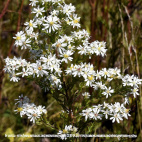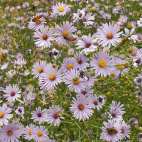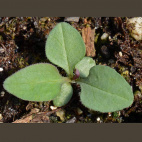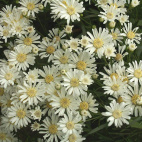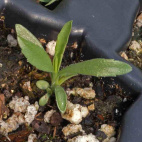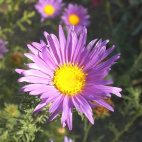Color
Availability
USDA Zone
Region
Type
Duration
Season
Germination
Soil
Sunlight
Height
Use
Narrow Your Search
Color
Availability
USDA Zone
Region
Type
Duration
Season
Germination
Soil
Sunlight
Height
Use
All Wildflower Seeds: Aster - Aubrieta
Asters fill a crucial space in the composition of any prairie planting because they provide a late fall pollen and nectar source for the pollinators like honeybees. Some beekeepers like to take a late fall crop of Aster honey from the hive, and it has a unique strong flavor. Asters come in a variety of colors ranging from pure white to dark purple, including most of the blues, pinks, and purples in between. It is sometimes hard to get a good seed crop from Asters, as many of the seeds can be just empty hulls. We de-fluff and fan all of our Aster seeds to make sure that the seeds have a good germ rate.
-
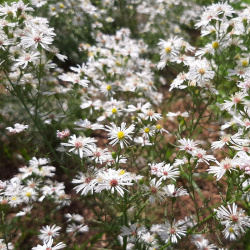 Heath Aster Seeds
Aster ericoides
Named for their resemblance to the white heath of the moors of England, these Asters thrive in dry, rocky prairies or pastures. Since it spreads easily, it will eventually form extended colonies of attractive white bushes.Quick View$3.75 Pkt - $100.00 / Oz
Heath Aster Seeds
Aster ericoides
Named for their resemblance to the white heath of the moors of England, these Asters thrive in dry, rocky prairies or pastures. Since it spreads easily, it will eventually form extended colonies of attractive white bushes.Quick View$3.75 Pkt - $100.00 / Oz -
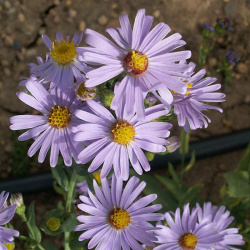 On Sale!
Smooth Blue Aster Seeds
Aster laevis
These bright blue flowers will add color to the autumn landscape. Unlike many asters, this variety produces perfectly smooth foliage and stems. This Aster is widely used in prairie restoration mixes.Quick View$3.75 Pkt - $15.95 / Oz
On Sale!
Smooth Blue Aster Seeds
Aster laevis
These bright blue flowers will add color to the autumn landscape. Unlike many asters, this variety produces perfectly smooth foliage and stems. This Aster is widely used in prairie restoration mixes.Quick View$3.75 Pkt - $15.95 / Oz -
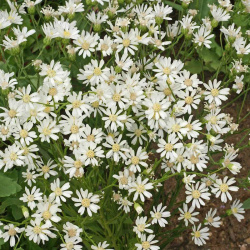 On Sale!
White Upland Aster Seeds
Aster ptarmicoides
Though not a true Aster, this plant is characterized by its profusion of white flowers. This variety does well in even the poorest, driest soil, and will provide some late-season color and nectar for winged garden visitors.Quick View$3.48 Pkt - $18.77 / Oz
On Sale!
White Upland Aster Seeds
Aster ptarmicoides
Though not a true Aster, this plant is characterized by its profusion of white flowers. This variety does well in even the poorest, driest soil, and will provide some late-season color and nectar for winged garden visitors.Quick View$3.48 Pkt - $18.77 / Oz -
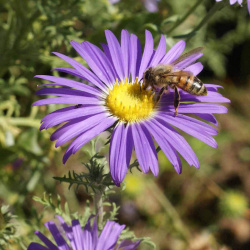 On Sale!
Prairie Aster Seeds
Aster tanacetifolia
Growing throughout most of the western United States, this aster especially thrives in desert areas. The ferny foliage produces bright blue and purple blooms.Quick View$3.48 Pkt - $15.95 / Oz
On Sale!
Prairie Aster Seeds
Aster tanacetifolia
Growing throughout most of the western United States, this aster especially thrives in desert areas. The ferny foliage produces bright blue and purple blooms.Quick View$3.48 Pkt - $15.95 / Oz
Asters fill a crucial space in the composition of any prairie planting because they provide a late fall pollen and nectar source for the pollinators like honeybees. Some beekeepers like to take a late fall crop of Aster honey from the hive, and it has a unique strong flavor. Asters come in a variety of colors ranging from pure white to dark purple, including most of the blues, pinks, and purples in between. It is sometimes hard to get a good seed crop from Asters, as many of the seeds can be just empty hulls. We de-fluff and fan all of our Aster seeds to make sure that the seeds have a good germ rate.




